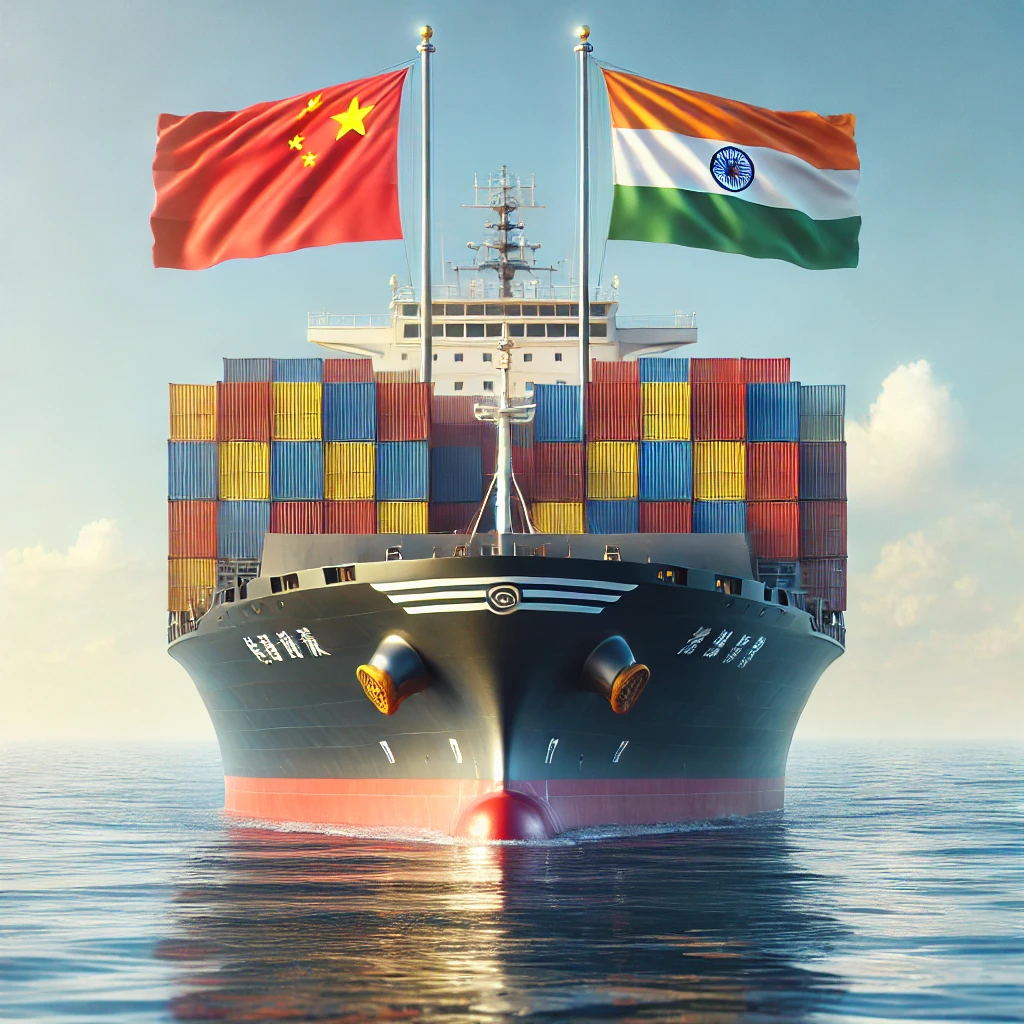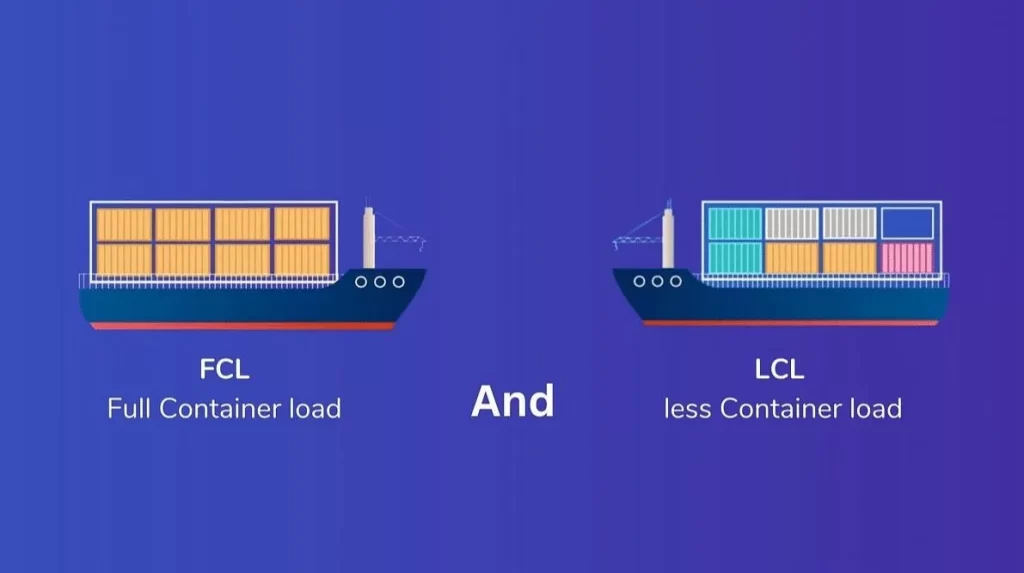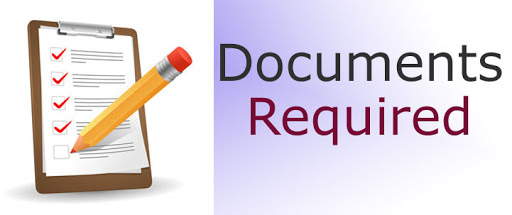- By TOP CHINA FREIGHT
- September 15, 2025
- Sea Freight, Shipping
Table of Contents
Calculating freight charges from China to India by sea is critical for businesses importing goods from China. Many importers face challenges such as fluctuating shipping costs, port congestion, and complex customs clearance. Understanding container pricing, transit times, and documentation requirements can help reduce overall costs. This guide provides in-depth insights into sea freight costs, practical techniques for efficiency, and strategies to optimize your supply chain.

What factors determine freight charges from China to India by sea?
Freight charges depend on multiple factors, including:
Container type:
FCL (Full Container Load) is generally cheaper per unit than LCL (Less than Container Load).
Port selection:
Congested ports may incur higher handling fees.
Cargo characteristics:
Weight, dimensions, and nature of goods affect pricing.
Seasonal demand:
Peak shipping periods, like pre-Chinese New Year, can increase costs.
Fuel surcharges and carrier rates:
Volatile fuel prices influence overall freight charges.
Table: Factors Affecting Sea Freight Charges
| Factor | Impact on Charges |
|---|---|
| Container Type | FCL cheaper per unit than LCL |
| Port Selection | Congestion increases fees |
| Cargo Weight/Volume | Heavier or oversized cargo costs more |
| Seasonal Demand | Peak season surcharges apply |
| Fuel and Carrier Rates | Price fluctuations affect total cost |
How much does sea freight from China to India cost?

Costs vary depending on container type, volume, and ports.
Working with a freight forwarder can help negotiate lower rates, consolidate shipments, and optimize schedules.
What is the difference between FCL and LCL shipments?

FCL (Full Container Load):
Best for large shipments; you pay for the entire container. Offers more security and lower cost per unit.
LCL (Less than Container Load):
Suitable for smaller cargo volumes. Costs are calculated per cubic meter, but transit times may be slightly longer due to consolidation.
Table: FCL vs LCL Comparison
| Feature | FCL | LCL |
|---|---|---|
| Cost | Lower per unit | Higher per unit |
| Transit Time | Faster | Slightly longer |
| Security | High | Moderate |
| Volume Requirement | 1 full container | Partial shipment |
How do port selection and shipping routes affect costs?
Choosing the right port can significantly impact freight charges:
- Major ports like Mumbai, Chennai, and Kolkata often have better infrastructure and lower handling fees.
- Smaller ports may have higher charges due to limited capacity.
- Direct shipping routes reduce transit times and lower the risk of delays, whereas transshipment increases costs and handling.
What documentation is required for sea shipments?

Correct documentation ensures smooth customs clearance and avoids penalties:
| Document | Purpose |
|---|---|
| Bill of Lading (B/L) | Proof of shipment |
| Commercial Invoice | Declares product value |
| Packing List | Details cargo dimensions and weight |
| Certificate of Origin | Required for preferential tariffs |
| Import License | Mandatory for restricted goods |
| Customs Declaration | Provides shipment details to authorities |
How can importers reduce sea freight charges from China to India?
Combine multiple LCL shipments into one FCL container.
Select less congested ports or direct shipping lines.
Ship outside peak seasons to avoid surcharges.
Freight brokers can secure lower carrier fees.
Minimize volumetric weight and reduce unnecessary space.
How long does shipping from China to India by sea take?
Transit times depend on origin and destination ports:
| Destination Port | Transit Time | Notes |
|---|---|---|
| Mumbai | 15–20 days | Direct shipping lines |
| Chennai | 18–22 days | Popular for industrial imports |
| Kolkata | 20–25 days | Eastern port hub |
| New Delhi (inland) | 20–28 days | Requires inland transport |
Using a reliable forwarder can optimize transit schedules and reduce delays.
Case Study: Reducing Sea Freight Costs for Electronics Importer

An electronics importer shipping small LCL consignments to Mumbai experienced high costs and delays. A freight forwarder implemented:
- Consolidation into FCL containers
- Off-peak scheduling
- Direct shipping routes
Result:
Freight costs decreased by 30%, transit time improved by 5 days, and customs clearance became smoother.
How to choose the right freight forwarder for China-India shipments?
A competent forwarder offers:
- Experience with China-India routes
- Transparent and itemized pricing
- Customs clearance expertise
- Real-time shipment tracking
- Access to multiple shipping lines
Partnering with a forwarder ensures cost-effective and reliable logistics management.
Conclusion
Understanding freight charges from China to India by sea requires evaluating container type, shipping routes, transit times, and documentation. Utilizing a professional freight forwarder helps reduce costs, minimize delays, and ensure smooth logistics operations.
Need a Shipping Quote?
If you want expert guidance and peace of mind, our team is ready to assist.
TJ China Freight offers tailored solutions to help businesses of all sizes ship more reliably from China.

FAQ
Q1:How are sea freight charges from China to India calculated?
Charges depend on container type, cargo volume, weight, port selection, and surcharges. Forwarders provide detailed quotes considering all variables.
Q2:Is FCL cheaper than LCL for sea shipments?
Yes, per unit cost is lower with FCL for larger volumes, offering faster transit and higher security than LCL shipments.
Q3:How long does sea shipping from China to India take?
Transit times range from 15–25 days depending on ports and shipping routes. Consolidation or transshipment may slightly increase delivery time.
Q4:Can I reduce sea freight charges with off-peak shipping?
Shipping outside peak seasons lowers surcharges. Planning ahead and using a freight forwarder ensures cost-efficient scheduling.
Q5:Do sea freight charges include customs duties?
No, sea freight charges cover transportation. Customs duties, taxes, and port fees are calculated separately and can be managed by your forwarder.
